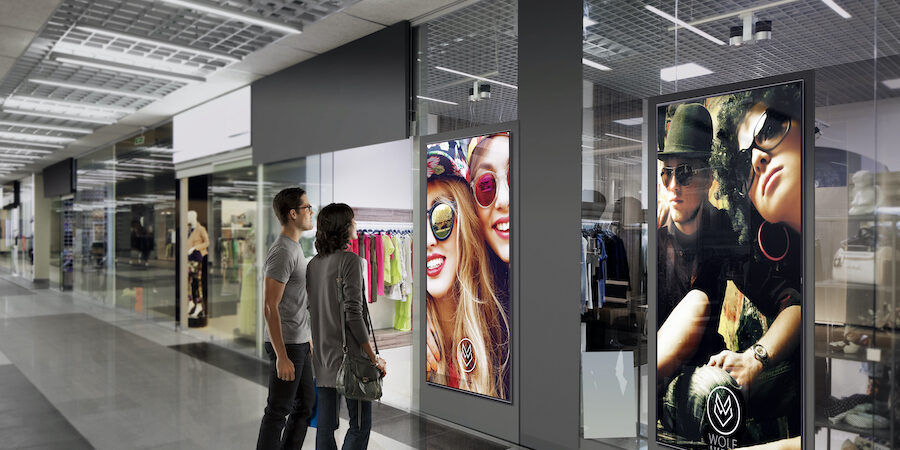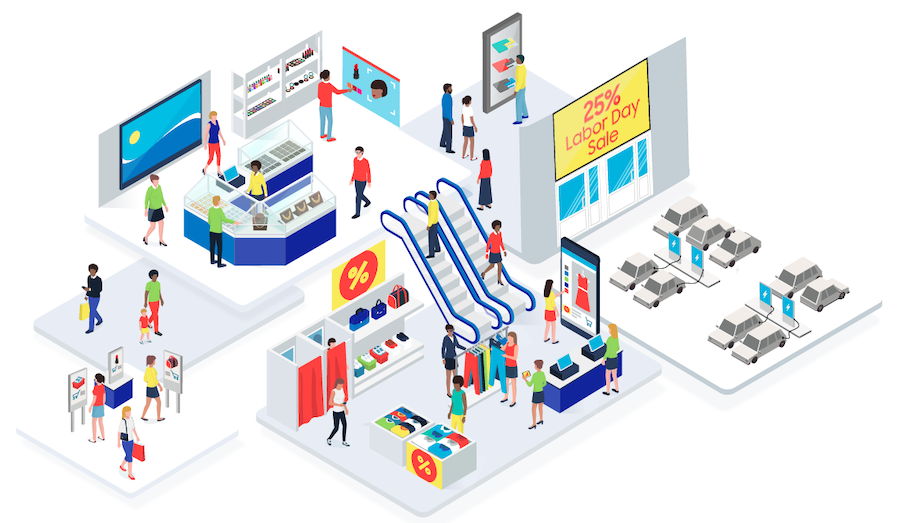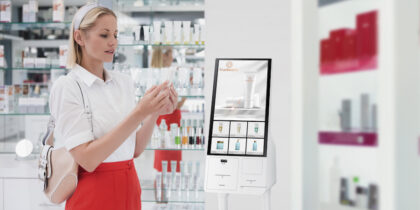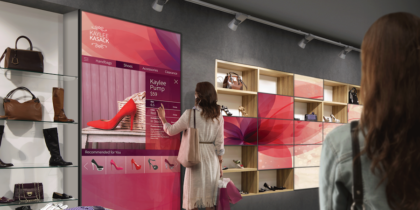With so many ways to advertise, marketing teams must make hard choices about where to spend their dollars. But there’s a secret weapon many of the world’s top brands use to promote their products that is much more effective than others — and it’s free.
User-generated content (UGC) is exactly what the name implies: content that is created by customers instead of a brand. Examples of UGC include photos, videos, online reviews, live streams and product testimonials, and a common place to find it all is on social media.
The benefits of user-generated content marketing
UGC can be a powerful tool in influencing the customer journey. Most notably, it allows everyday, relatable people to rave about your product or service from a place of authenticity. UGC rotating on a digital display enhances the in-store experience and helps build brand loyalty.
According to Stackla, consumers are 2.4 times more likely to view user-generated content as authentic compared to content created by brands. And brands agree: According to TINT’s The State of User-Generated Content 2022 Report, 93 percent of marketers said that consumers trust content created by customers more than content created by companies.
How digitizing retail experiences boosts ROI
Explore customer behavior with and the operational benefits of a complete digital retail ecosystem. Download Now
For example, on a practical level, consumers want to see how clothes fit various body types or how makeup looks on various shades of skin — particularly when they are purchasing online. UGC can also be used to promote fun, spontaneous or meaningful moments. Take Coca-Cola’s 2011 Share a Coke campaign, which featured popular names on the brand’s iconic red-and-white soda bottles. The purpose of the campaign was to create a more personal relationship with consumers and inspire shared moments of happiness (through photos) using the hashtag #ShareaCoke. It worked: The campaign was such a success it spread to 80 countries and remains the biggest UGC campaign in history.
A subset of UGC is employee-generated content (EGC). With EGC, brands can show the good things they — and their employees — are doing in the community and the world. For example, brands might highlight employees explaining their sustainability initiatives such as recycling or offsetting water usage, production lines in action during the holidays or team members discussing what they love about the company. This kind of behind-the-scenes content helps establish brand identity and gives consumers a peek into what makes your brand unique.
For many brands, UGC is a more realistic and agile option than hiring expensive production crews to concept and create individual ad campaigns. UGC gives brands an incredible opportunity to highlight and engage directly with their most loyal, dedicated shoppers who will likely be excited to be featured online.
Where to find user-generated content for retailers
So, how do brands like Verizon, McDonald’s, Netflix, National Geographic, Honda and Prada leverage UGC? After all, even though it’s free, it would take forever to curate every mention of your brand online in real time. These household-name brands — and many other enterprise-level corporations — use Sprinklr, a social listening tool that helps brands harness the power of UGC.
Sprinklr’s AI technology allows businesses to engage with customers across more than 35 social and messaging channels, identifying a brand’s strongest supporters and boosting their content on owned channels streamed via displays inside the store. Social media is now a preferred contact channel, so businesses can gain trust by actively engaging with prospects and customers there, including using chat and messaging features.
Sprinklr can also tap into relevant conversations that don’t directly involve your brand with integrated listening, which helps identify consumer trends. And with the software’s enterprise-grade governance, brands don’t have to worry about inappropriate content slipping through the cracks: Sprinklr eliminates the risks of off-brand engagement by bringing rules, approvals and moderation processes together in a single unified framework. Together, these features transform social media from a conversation starter into a revenue driver.
How to use user-generated content
UGC isn’t just an affordable “feel good” tactic — it’s a metric by which brands can measure success and return on investment (ROI). UGC can play on digital displays inside a retail space, drawing customers in and influencing their on-the-ground shopping decisions. When integrated with software like FastSensor, marketers can see what messaging works and where, and then optimize it for maximum value.
Using radio frequency listening, FastSensor’s AI tracks physical foot traffic in retail stores. It can determine which areas of a store customers visit most (or least), how long they stay there, and more. With this information, brands can identify specific trends and convert this information into advanced analytics and actionable data, such as changing display content based on a potential buyer’s behavior.
UGC is an incredibly effective and affordable way to connect with fans, reach new customers and build brand trust in the marketplace. It’s also a cost-effective way to scale your business and increase ROI with minimal expenditure. For retailers looking to take their content game to the next level, UGC is the way to go.
Discover the full range of Samsung’s retail display solutions, each designed for cost-effective impact and versatility. And get your free guide to growing your retail business by adopting future-proof, e-commerce technology.






